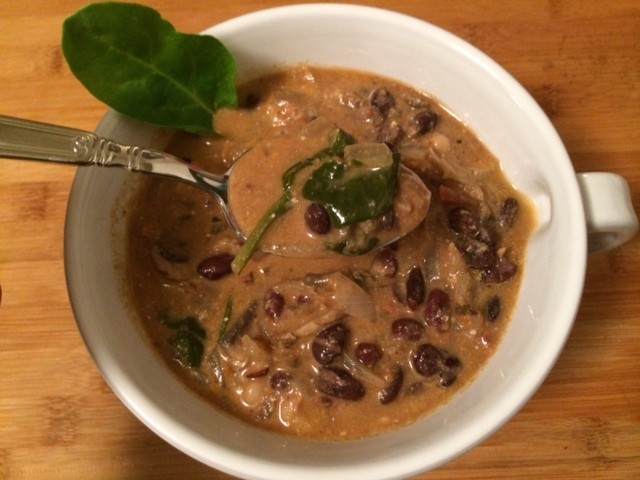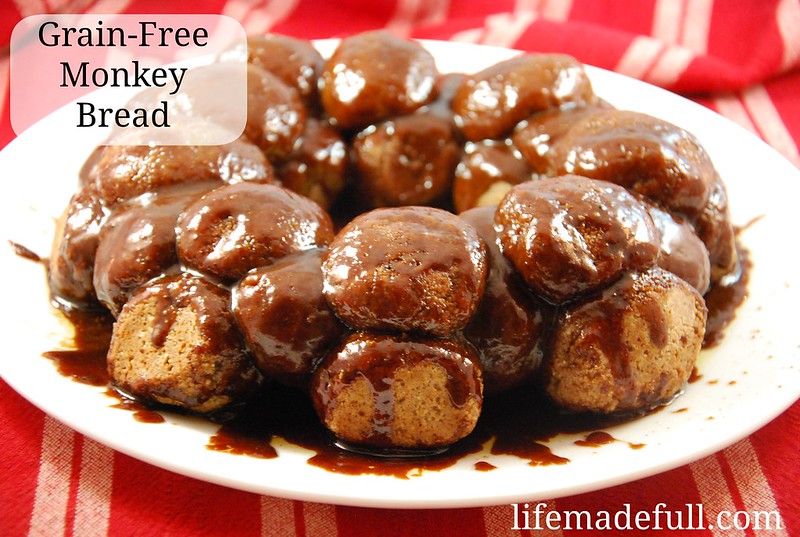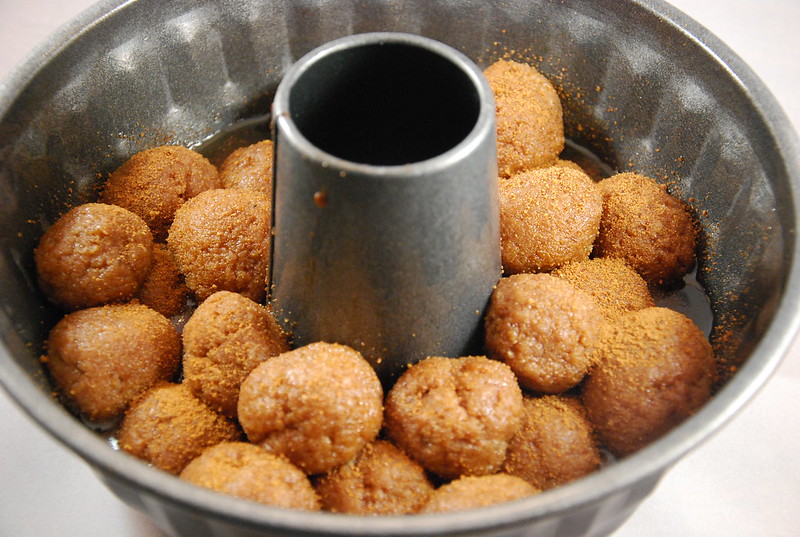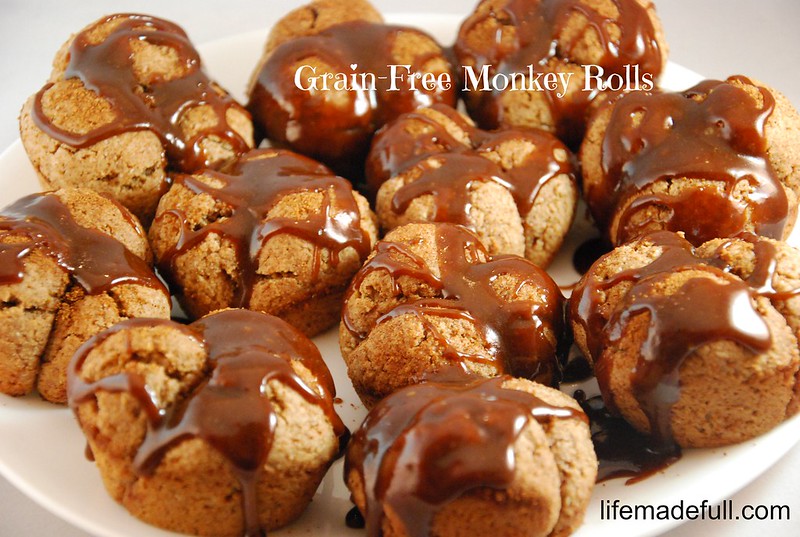about 2-3kg of bones (beef marrow, knuckle bones, meaty rib, neck bones – whatever the butcher will give you)
about 3-4 litres of cold water
1/2 cup vinegar
2-3 onions, coarsely chopped
3 carrots, coarsely chopped
3 celery stalks, coarsely chopped
several sprigs of fresh thyme, tied together
1 teaspoon dried green peppercorns, crushed or a tsp black peppercorns
Meanwhile, place the meaty bones in a roasting pan and brown at 350 degrees in the oven. When well browned, add to the pot along with the vegetables.
Add additional water, if necessary, to cover the bones; but the liquid should come no higher than within one inch of the rim of the pot, as the volume expands slightly during cooking.
Bring to a boil. Reduce heat and add the thyme and crushed peppercorns.
Simmer 12-72 hours.
Strain the lot (you’ll need to use tongs our your hands to pull out the bones) into a large bowl. Let cool in the fridge and then…
This is a little grose, but somehow satisfying. The congealed fat on top is usually a good 1-2cm thick and you can literally pick it up in chunks (like ice over a pond) and turf it.
Divide into containers and freeze/eat.
* Make this amazing Wild Mushroom stew.
* Braise vegetables with it. I use a tablespoon or two instead of oil when doing stirfries.
The first time I made beef stock, it wasn’t very good and didn’t become brown enough, but was an insipid beige color. The second time I made it, it didn’t gell, but it tasted good. It’s amazing that I tried again, but I guess it made success all the more sweet. Here are some tips to increase your success.
Top 5 Reasons Why Bone Broth is The Bomb. Here we go!
Reason #1: Bone Broth Makes Your Joints Feel as Smooth as Eggs.
Yes, that was a Dave Chappelle reference. If you don’t get it, don’t worry about it.
Anyway…
In her ridiculously awesome book Deep Nutrition, Dr. Cate Shanahan writes…
“The health of your joints depends upon the health of the collagen in your ligaments, tendons, and on the ends of your bones. Collagens are a large family of biomolecules, which include the glycosaminoglycans, very special molecules that help keep our joints healthy.”
Bone broth is loaded with glycosaminoglycans (GAGs). In fact, I’m absolutely certain that you’ve heard of one of them — glucosamine. Yep, those supplements that seemingly everyone is taking for joint health contain one of the GAGs we get from consuming bone broth.
You know me, I’m a food-first kind of guy. Here’s just one of the reasons why I prefer Real Food over supplementation…
Notice I said that glucosamine is just one of the GAGs contained in bone broth. When you consume broth you also get chondroitin, hyaluronic acid, and likely a bunch of other equally important GAGs that have yet to be discovered.
What’s more, the GAGs we get from bone broth are resistant to digestion and are absorbed in their intact form. According to Dr. Cate, these intact GAGs like hormones, stimulating cells calledfibroblasts which lay down collagen in the joints, tendons, ligaments, and even the arteries.
I can personally attest to the joint-healing benefits of bone broth. Before I began drinking it regularly, I had been dealing with a lingering dull pain in my left shoulder. After about a week and a half of daily consumption, the pain completely vanished. My knees feel much better when running stairs as well.
It’s truly powerful stuff!
Reason #2: Bone Broth Makes Your Hair, Skin, and Nails Look Dead Sexy.
I know people who, in a quest to recapture a youthful appearance, will pay top dollar for products that boost collagen — also the main constituent of hair, skin, and nails.
As we age, production of collagen declines and we start to see the outward signs of aging.
Out here in San Diego (Land of The Beautiful), botox — a drug made from a toxin produced by the bacterium clostridium botulinum — is all the craze for the reduction of lines and wrinkles.
That’s kinda weird, in my opinion. And expensive.
Personally, I’d much rather prepare and consume bone broth to keep my skin, hair (if I had any), and nails looking fabulous than have a toxin injected into my face.
But that’s just me.
(By the way, broth is super cheap to make on your own.)
Reason #3: Bone Broth Heals Your Gut!
Let’s keep it real. Most people reading this blog right now are experiencing some kind of gastrointestinal challenge — constipation, diarrhea, food sensitivities, leaky gut, or even autoimmune disease.
One of the most vital nutrients for healing the gut is gelatin. Yep, the stuff that makes the Jell-O jiggle.
There was a time when gelatin was the most studied nutrient under the sun for all of its healing virtues. Times have certainly changed.
To make a long story short, the intestinal lining is supposed to be permeable in order for nutrients to pass through. However, this lining can become too permeable due to lifestyle factors such as poor diet, stress, long-term contraceptive use, as well as bacterial and fungal overgrowths. Just think of poking huge holes in your window screens at home. Yes, the good air will pass through, but the flies, gnats, and mosquitoes will too.
This is how leaky gut — or gut hyperpermeability — works. Undigested food particles can slip through the gut lining and pass directly into the bloodstream. No bueno! When this happens, the immune system freaks out and starts attacking the very foods you eat — we call these food sensitivities.
Over time, this can turn into an autoimmune issue by which your immune system thinks your thyroid — or any other tissue, for that matter — looks like the piece of steak molecule it’s been fighting off for the past few years. In other words, your body starts to attack itself.
According to our good friend Dr. Thomas O’Bryan, autoimmunity will soon be the number one cause of death in this country. Gut hyperpermeability is a big reason why.
What does bone broth have to do with any of this? Well, the gelatin in bone broth spackles the excess holes in the gut lining, so to speak. It’s quite the handyman, and should be part of any gut-healing protocol.
Reason #4: Bone Broth Reduces Your Need for Meat and Protein.
This is pretty darn interesting. In her fantastic Real Food Summit (RFS) presentation, Sarah Pope revealed that studies conducted in the 1800s demonstrated that when there is plenty of gelatin in the diet, the body’s need for protein from meat sources can be reduced by as much as fifty-percent!
We all know that purchasing quality meats can be hard on the wallet. The good news is that you can make bone broth for dirt cheap and thus save money on meat.
Not a bad deal.














 Savoy Cabbage
Savoy Cabbage











